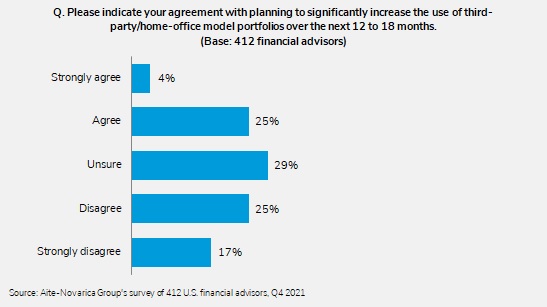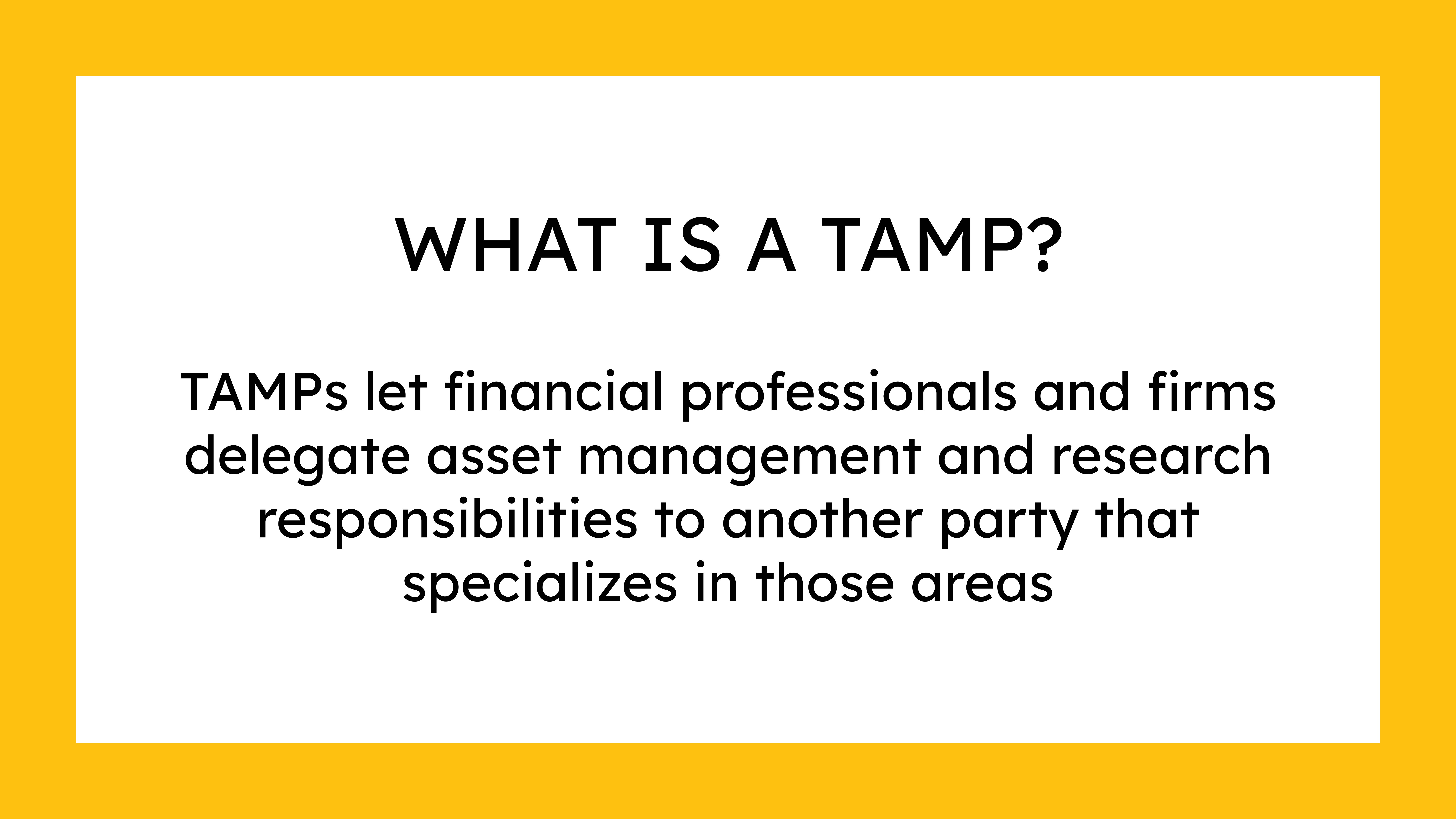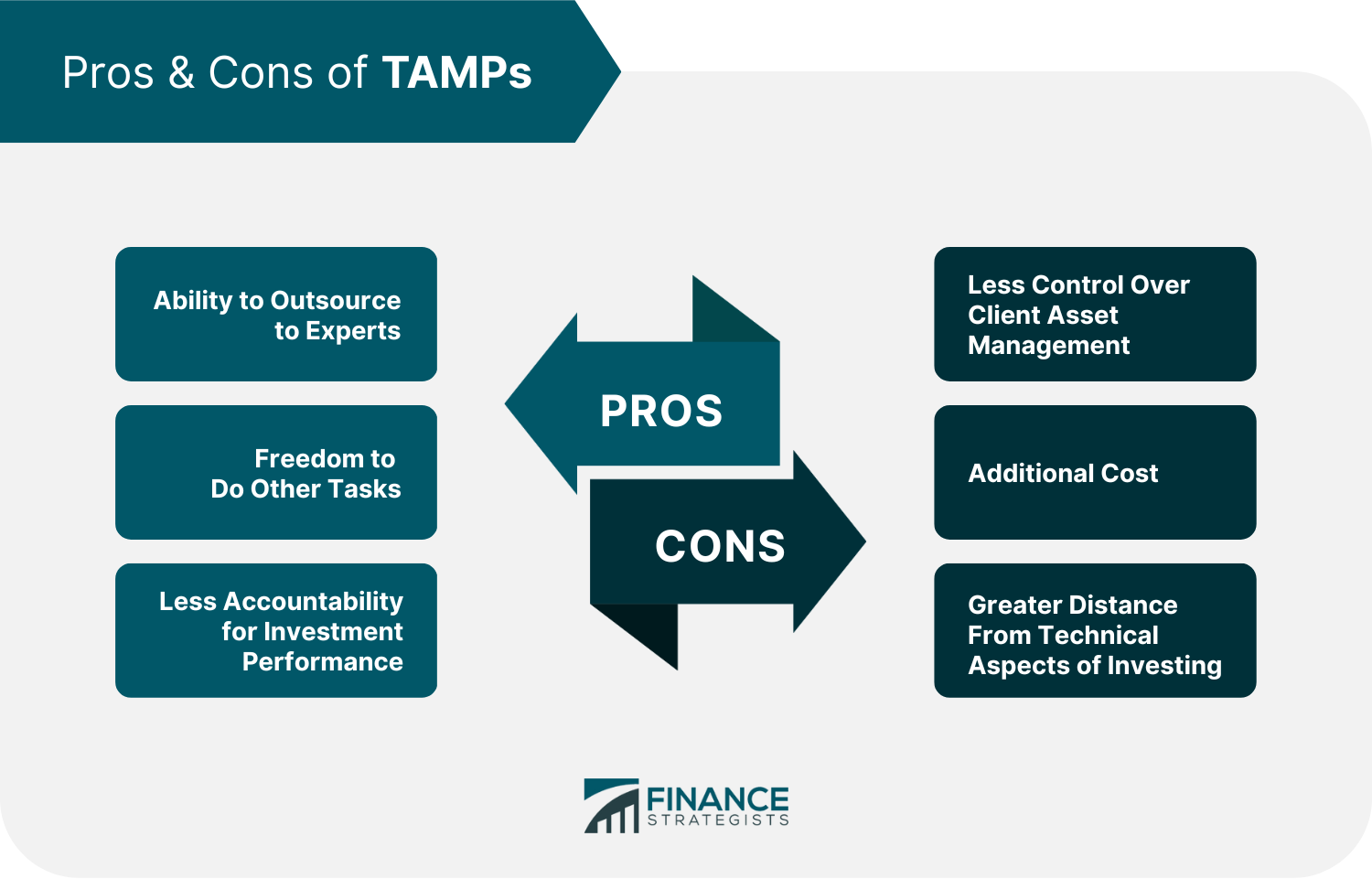A TAMP in finance refers to a Turnkey Asset Management Program. These programs offer a comprehensive service solution for managing investment portfolios.
TAMPs provide financial advisors a streamlined way to oversee their clients’ investments. They deliver a suite of services that often include portfolio management, consolidated reporting and billing, and sometimes back-office functionalities. Traditionally, they allow advisors to outsource the complexity of investment management.
This outsourcing enables advisors to focus on client relationships and holistic financial planning. By leveraging TAMPs, investment professionals can access a broad selection of investment strategies and products to meet varied client needs. It’s a scalable approach that supports business growth without compromising service quality. TAMPs are beneficial for both established and emerging firms looking to enhance their investment offerings efficiently.
The Essence Of Tamps In Modern Finance
Turnkey Asset Management Programs (TAMPs) play a vital role in modern finance. TAMPs offer financial advisors a streamlined approach to manage their clients’ portfolios. With TAMPs, advisors access a variety of investment strategies and operations support, freeing them to focus on client relationships and growth.
Defining Turnkey Asset Management Programs
Turnkey Asset Management Programs, or TAMPs, are comprehensive investment solutions. They cater to finance professionals. These programs provide a collection of services like portfolio management, back-office operations, and administrative tasks. TAMPs act as a one-stop-shop for wealth managers to offer sophisticated investment strategies to their clients.
- Outsourced investment management: Advisors use TAMPs to access expert asset managers.
- Administrative relief: They handle day-to-day operations, from paperwork to reporting.
- Technology platform: Advisors receive tools for analytics, reporting, and client communication.
Evolution Of Tamps In Financial Services
The financial landscape has seen vast changes, and TAMPs have evolved to meet these shifts. Historically, TAMPs offered basic portfolio management services. Now, they deliver comprehensive solutions, including advanced technology tools and broader investment options.
| Decade | Focus |
|---|---|
| 1990s | Initial portfolio management services |
| 2000s | Expansion into multi-strategy offerings |
| 2010s | Incorporation of cutting-edge technology |
| 2020s | Customized investment solutions |
Technology integration has been transformative. TAMPs now provide platforms that feature automated tools for risk assessment, portfolio rebalancing, and client reporting. The modern TAMP is not just a tool but a partner for growth in the demanding world of financial advisory.

Credit: datos-insights.com
How Tamps Function
A Turnkey Asset Management Program, or TAMP, is a service that helps financial advisors manage their clients’ investments. It is like a tool kit for investment professionals. They use TAMPs to handle the tricky parts of investing so they can focus on their clients.
Services Offered By Tamps
TAMPs offer a range of services to support financial advisors. These make managing investments easier and quicker. Check out their offerings:
- Investment Choices: TAMPs provide access to various investment options. This includes stocks, bonds, and funds.
- Portfolio Management: They help create and look after investment plans for clients.
- Reporting Tools: These tools show how investments are doing. Reports can be easy to understand.
- Back-Office Support: TAMPs handle the paperwork and technical details. This saves time for advisors.
- Compliance Assistance: With rules always changing, TAMPs keep track to avoid mistakes.
Operating Models: In-house Vs. Outsourced
How a TAMP works can be different based on the choice between in-house or outsourced models.
| In-House TAMP | Outsourced TAMP |
|---|---|
| Managed by the advisor’s firm | Managed by an external provider |
| More control over investments | Experts handle the management |
| Can be costly and complex | Saves time and resources |
| Needs a capable in-house team | Access to diverse expertise |
Financial advisors choose based on their needs and resources. Some may like full control with an in-house TAMP. Others may prefer to save time with an outsourced TAMP, bringing in outside experts.
Roles And Responsibilities Within A Tamp
Understanding the roles and responsibilities within a TAMP—Turnkey Asset Management Platform—is crucial. A TAMP offers financial advisors a variety of services including back-office support and unified financial management. Each role within a TAMP contributes to seamless investment management. Let’s explore key positions in detail.
The Portfolio Manager’s Role
Portfolio Managers stand at the core of a TAMP’s operations. They handle the investments and oversee portfolio strategies. Their tasks can be summarized as follows:
- Developing Investment Strategies: Crafting plans to meet specific financial goals.
- Asset Allocation: Deciding where to invest funds across various asset classes.
- Risk Management: Assessing and mitigating potential investment risks.
- Performance Monitoring: Keeping a close eye on portfolio performance.
These professionals optimize portfolios by continuously analyzing market trends and economic indicators. Their decisions directly impact investment outcomes for clients.
Client Relationship Management
In a TAMP, Client Relationship Managers serve as the bridge between the firm and its clients. This role encompasses:
- Communication: Regularly interacting with clients to update and inform.
- Client Support: Addressing queries and providing detailed explanations of services.
- Customization: Aligning services with individual client needs and objectives.
- Feedback Implementation: Adjusting strategies based on client reviews and experiences.
They ensure clients feel heard and their investments are in tune with their aspirations. Trust and satisfaction are key outcomes of effective client relationship management.

Credit: potomacfund.com
Benefits Of Partnering With A Tamp
TAMPs offer unique advantages to advisors looking to scale their businesses. They provide a broad array of services designed to streamline operations. Let’s explore how a TAMP can be a game-changer for financial professionals.
Efficiency And Cost-effectiveness
- Centralized Management: TAMPs centralize investment activities, saving time.
- Reduced Overhead: They cut down on the need for in-house investment management staff.
- Bulk Buying: TAMPs often secure lower prices on investments due to collective bargaining.
By using TAMPs, advisors can focus more on their clients and less on back-end tasks.
Access To Expertise And Complex Investment Strategies
- Professional Insights: TAMPs grant access to seasoned investment professionals.
- Advanced Tools: They offer sophisticated analytical tools for better decision-making.
- Diverse Strategies: TAMPs allow for a broader pool of strategies, including those not typically available to individual advisors.
Advisors gain an edge by leveraging the deep resources and knowledge that TAMPs offer.
Selecting The Right Tamp For Your Needs
Choosing the perfect Turnkey Asset Management Platform (TAMP) is crucial for your financial operations. It drives efficiency, growth, and client satisfaction. Not all TAMPs suit every business model. Selecting one aligned with your firm’s requirements is essential. Let’s explore how to sift through the options effectively.
Criteria For Evaluating Tamps
Evaluating TAMPs starts with identifying key features that align with business goals. Here are criteria to consider:
- Service offerings: Does the TAMP provide the services you need?
- Technology compatibility: Will their technology integrate smoothly with your systems?
- Cost structure: Is the pricing clear and does it fit within your budget?
- Support: Can you count on their team for help when needed?
- Customization: Can you tailor the platform as per client needs?
Analyze each criterion to find the best fit for your financial advisory firm.
Due Diligence Processes
Thorough due diligence ensures a TAMP aligns with your firm’s values and requirements. Here’s a process to follow:
- Gather Information: Start by collecting data on various TAMPs.
- Check references: Speak with current users about their experiences.
- Review performance history: Look at past results and reliability.
- Analyze costs: Ensure you understand the fee structures.
- Discuss customization: Ensure the platform can be tailored to your needs.
Take your time with due diligence. It lays the foundation for a successful partnership.

Credit: www.financestrategists.com
The Impact Of Technology On Tamps
Technology has dramatically reshaped the finance industry, particularly affecting Turnkey Asset Management Platforms (TAMPs). Through the integration of advanced fintech solutions, TAMPs have evolved to offer enhanced services that are more efficient, scalable, and client-focused. The following sections explore the dynamic role of technology in revolutionizing TAMPs.
Integrating Innovative Fintech Solutions
Fintech’s rise has been a game-changer for TAMPs, enabling these platforms to offer:
- Automated administrative tasks that save time and reduce errors.
- Personalized investment strategies tailored to individual client needs.
- Digital client portals for real-time access to investment data.
Sophisticated analytics and AI-driven tools further empower TAMPs to deliver superior decision-making support. Integration with blockchain technology offers increased security and transparency for all transactions.
The Future Of Tamps: Trends And Predictions
The future of TAMPs is closely linked with continuous technological advancement. Key trends include:
| Trend | Prediction |
|---|---|
| Artificial Intelligence | AI will dominate, offering personalized advice, and automating complex processes. |
| Big Data Analytics | Data-driven insights will enable TAMPs to make more accurate market predictions. |
| Blockchain Integration | Blockchain will enhance the security and efficiency of TAMP operations. |
As technology evolves, TAMPs will likely become even more user-friendly, offering customized features that align with diverse client requirements. The collaboration between TAMPs and tech innovators seals a promising and efficiency-driven future for asset management.
Frequently Asked Questions For What Is A Tamp In Finance
What Is A Tamp In Investments?
A “tamp” in investments refers to a Turnkey Asset Management Program, a service that provides comprehensive portfolio management solutions for advisors or investors.
What Are Tamps Used For?
Turnkey Asset Management Platforms (TAMPs) provide financial advisors with a streamlined system for managing client investment portfolios, offering access to a range of investment products and administrative support.
How Much Does A Tamp Charge?
A tamp generally charges anywhere from $30 to $100 per session, with prices varying based on location and complexity.
What Is The Difference Between Ria And Tamp?
A RIA (Registered Investment Advisor) offers broad financial advice and direct management of investments. Conversely, a TAMP (Turnkey Asset Management Program) provides investment platforms for RIAs to use, streamlining portfolio management and back-office services.
What Defines A Tamp In Finance?
A Tamp in finance refers to a Turnkey Asset Management Program, which provides outsourced investment management services.
Conclusion
Understanding a financial tamp is crucial for anyone delving into economic theory or business. It’s a concept that anchors stability in fluctuating markets. By mastering its intricacies, investors can make informed decisions and weather turbulent economic periods. Embrace the tamp’s role in finance; your portfolio may thank you for it.











